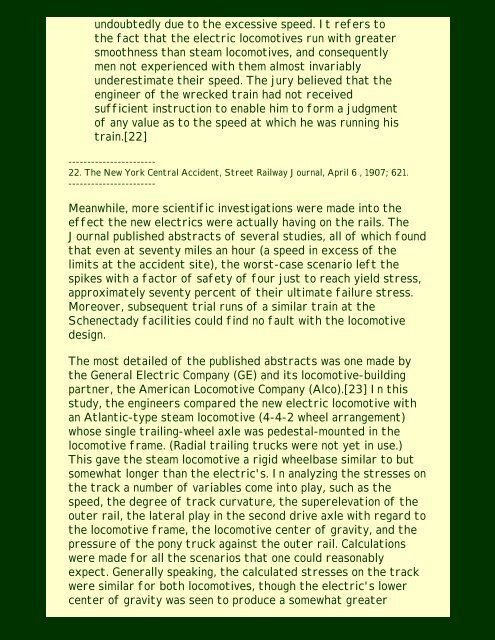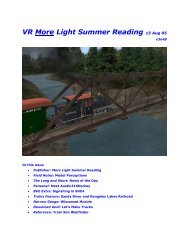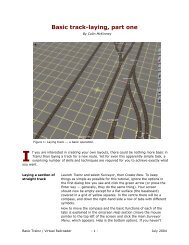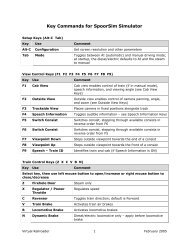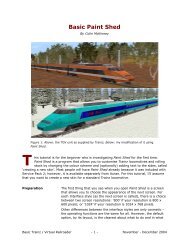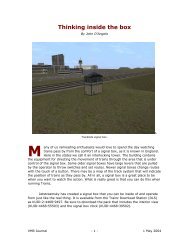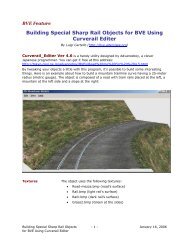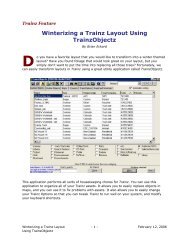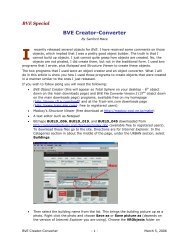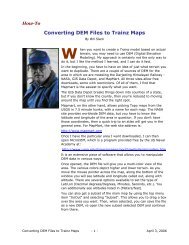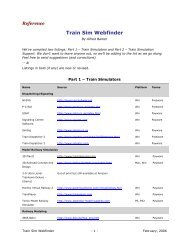Old Maude, Preface - Virtual Railroader
Old Maude, Preface - Virtual Railroader
Old Maude, Preface - Virtual Railroader
Create successful ePaper yourself
Turn your PDF publications into a flip-book with our unique Google optimized e-Paper software.
undoubtedly due to the excessive speed. It refers to<br />
the fact that the electric locomotives run with greater<br />
smoothness than steam locomotives, and consequently<br />
men not experienced with them almost invariably<br />
underestimate their speed. The jury believed that the<br />
engineer of the wrecked train had not received<br />
sufficient instruction to enable him to form a judgment<br />
of any value as to the speed at which he was running his<br />
train.[22]<br />
-----------------------<br />
22. The New York Central Accident, Street Railway Journal, April 6 , 1907; 621.<br />
-----------------------<br />
Meanwhile, more scientific investigations were made into the<br />
effect the new electrics were actually having on the rails. The<br />
Journal published abstracts of several studies, all of which found<br />
that even at seventy miles an hour (a speed in excess of the<br />
limits at the accident site), the worst-case scenario left the<br />
spikes with a factor of safety of four just to reach yield stress,<br />
approximately seventy percent of their ultimate failure stress.<br />
Moreover, subsequent trial runs of a similar train at the<br />
Schenectady facilities could find no fault with the locomotive<br />
design.<br />
The most detailed of the published abstracts was one made by<br />
the General Electric Company (GE) and its locomotive-building<br />
partner, the American Locomotive Company (Alco).[23] In this<br />
study, the engineers compared the new electric locomotive with<br />
an Atlantic-type steam locomotive (4-4-2 wheel arrangement)<br />
whose single trailing-wheel axle was pedestal-mounted in the<br />
locomotive frame. (Radial trailing trucks were not yet in use.)<br />
This gave the steam locomotive a rigid wheelbase similar to but<br />
somewhat longer than the electric's. In analyzing the stresses on<br />
the track a number of variables come into play, such as the<br />
speed, the degree of track curvature, the superelevation of the<br />
outer rail, the lateral play in the second drive axle with regard to<br />
the locomotive frame, the locomotive center of gravity, and the<br />
pressure of the pony truck against the outer rail. Calculations<br />
were made for all the scenarios that one could reasonably<br />
expect. Generally speaking, the calculated stresses on the track<br />
were similar for both locomotives, though the electric's lower<br />
center of gravity was seen to produce a somewhat greater


